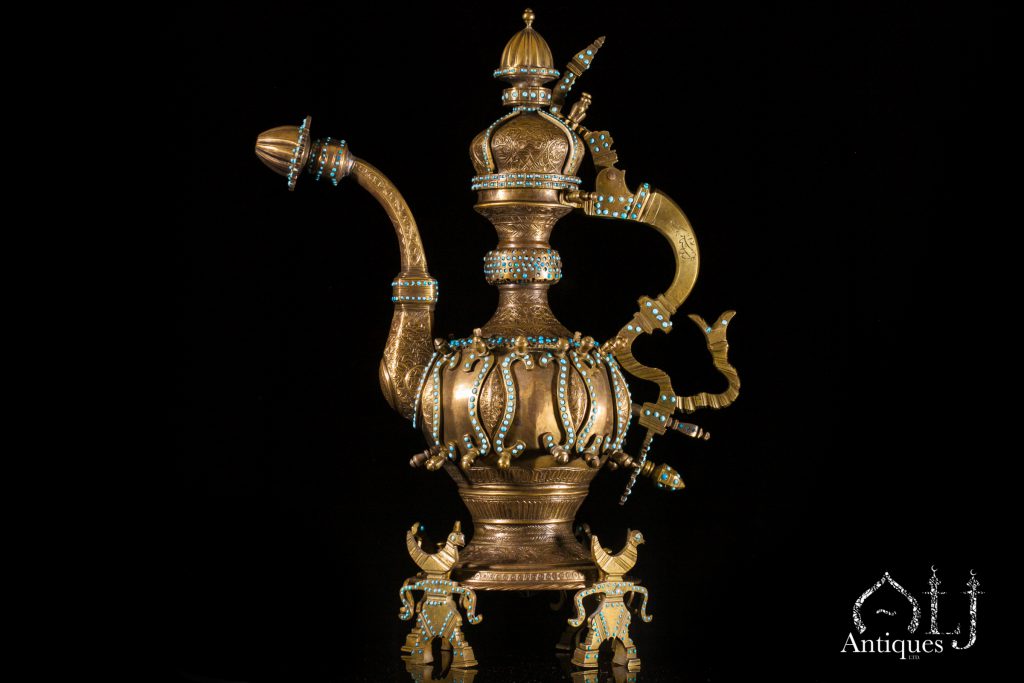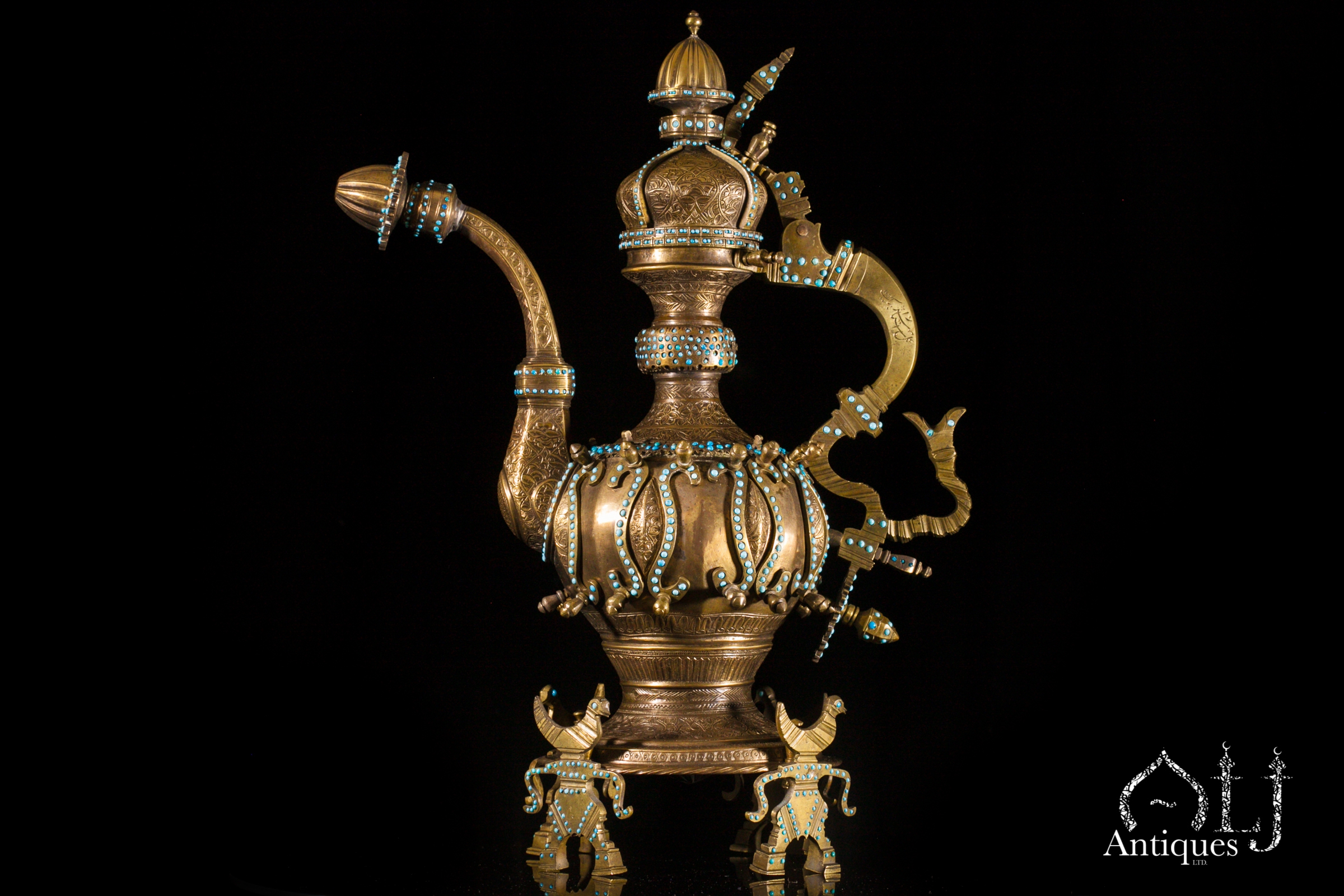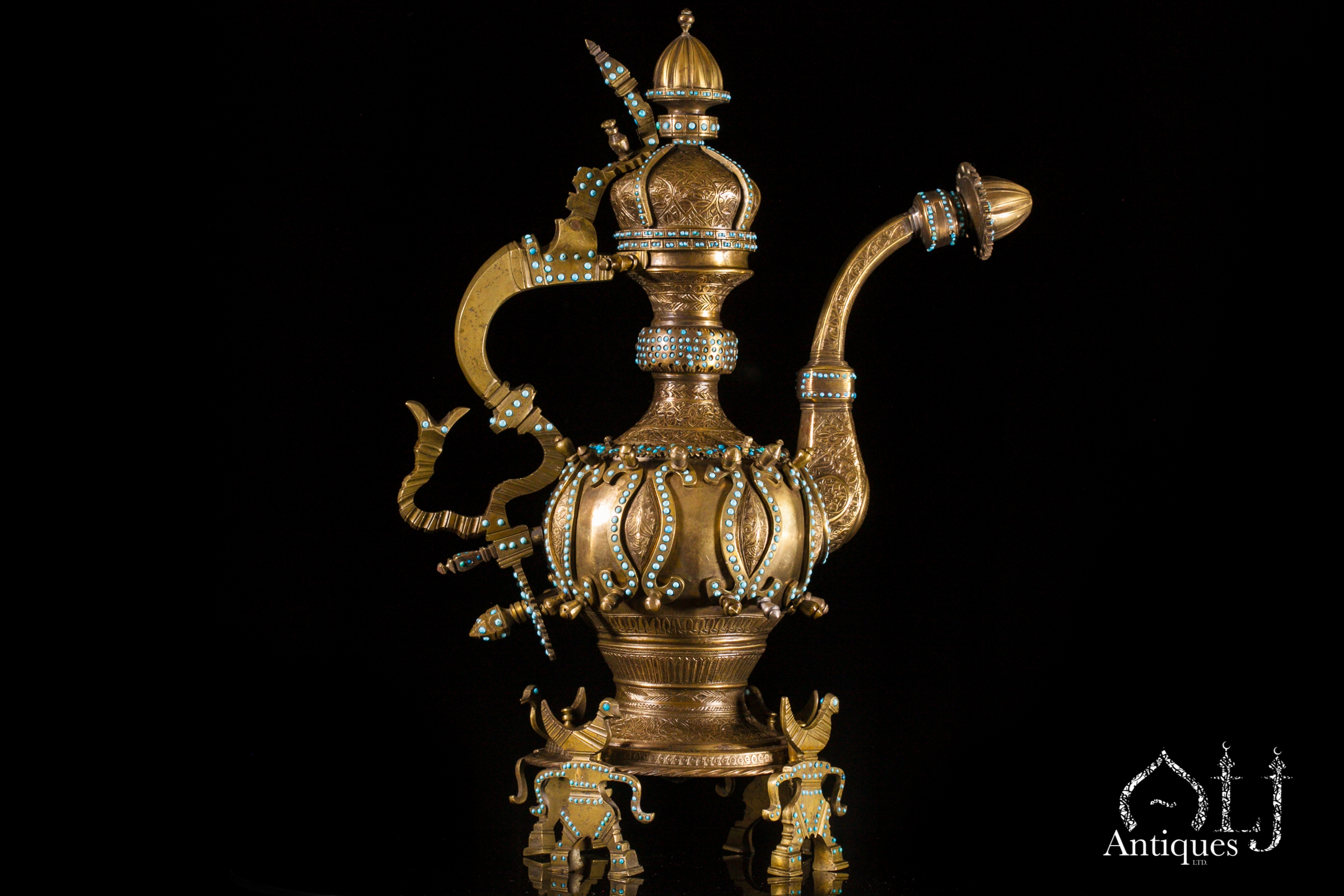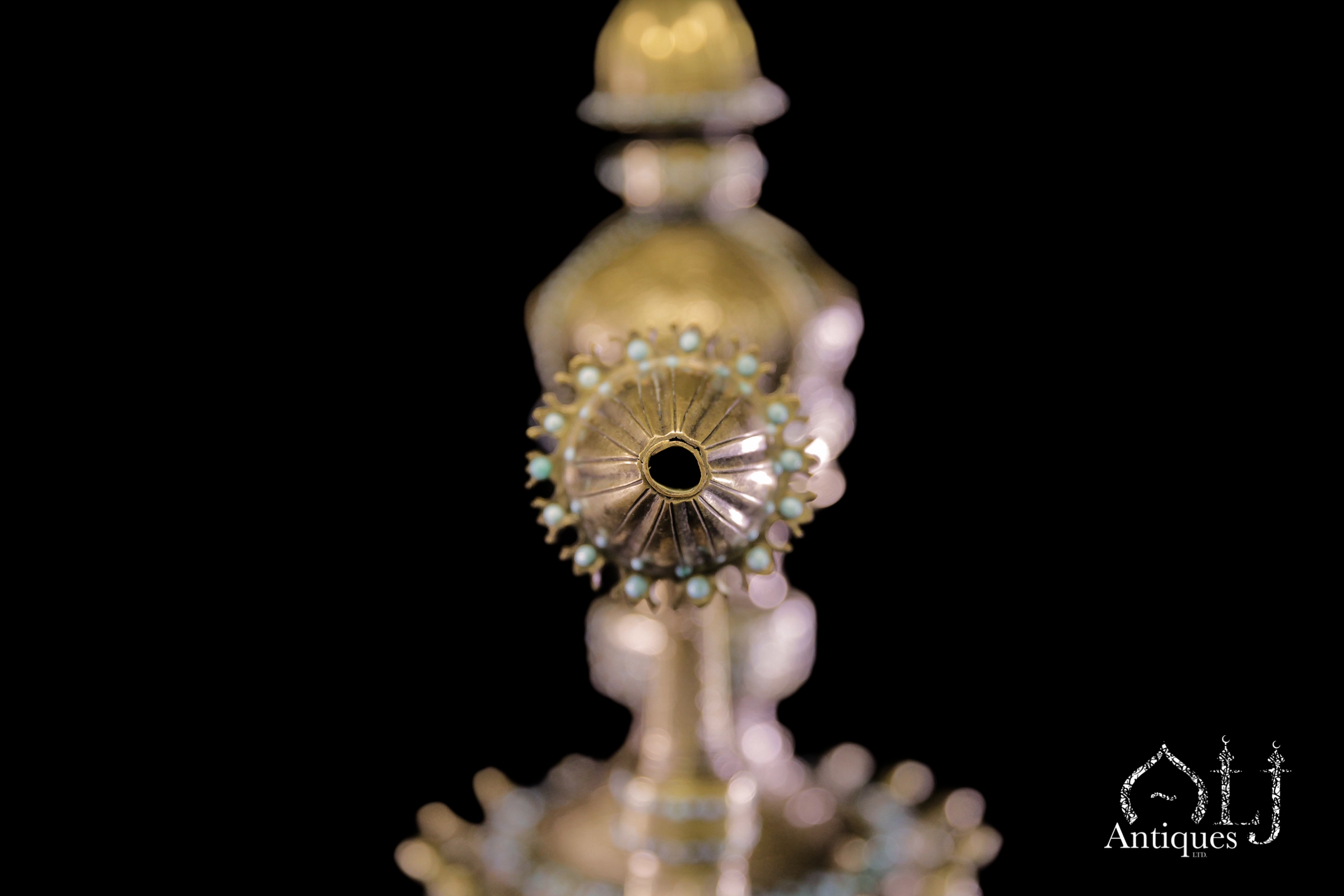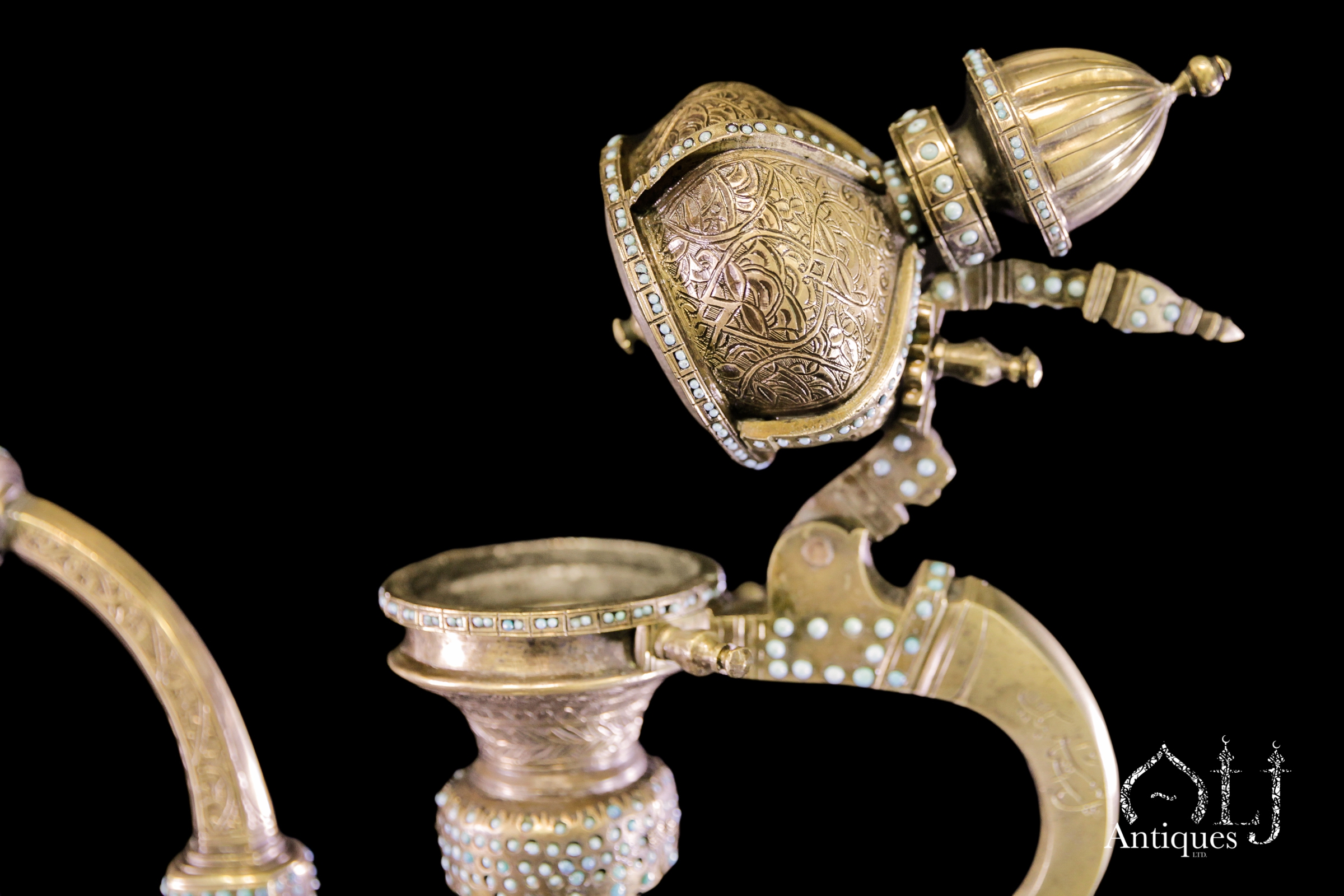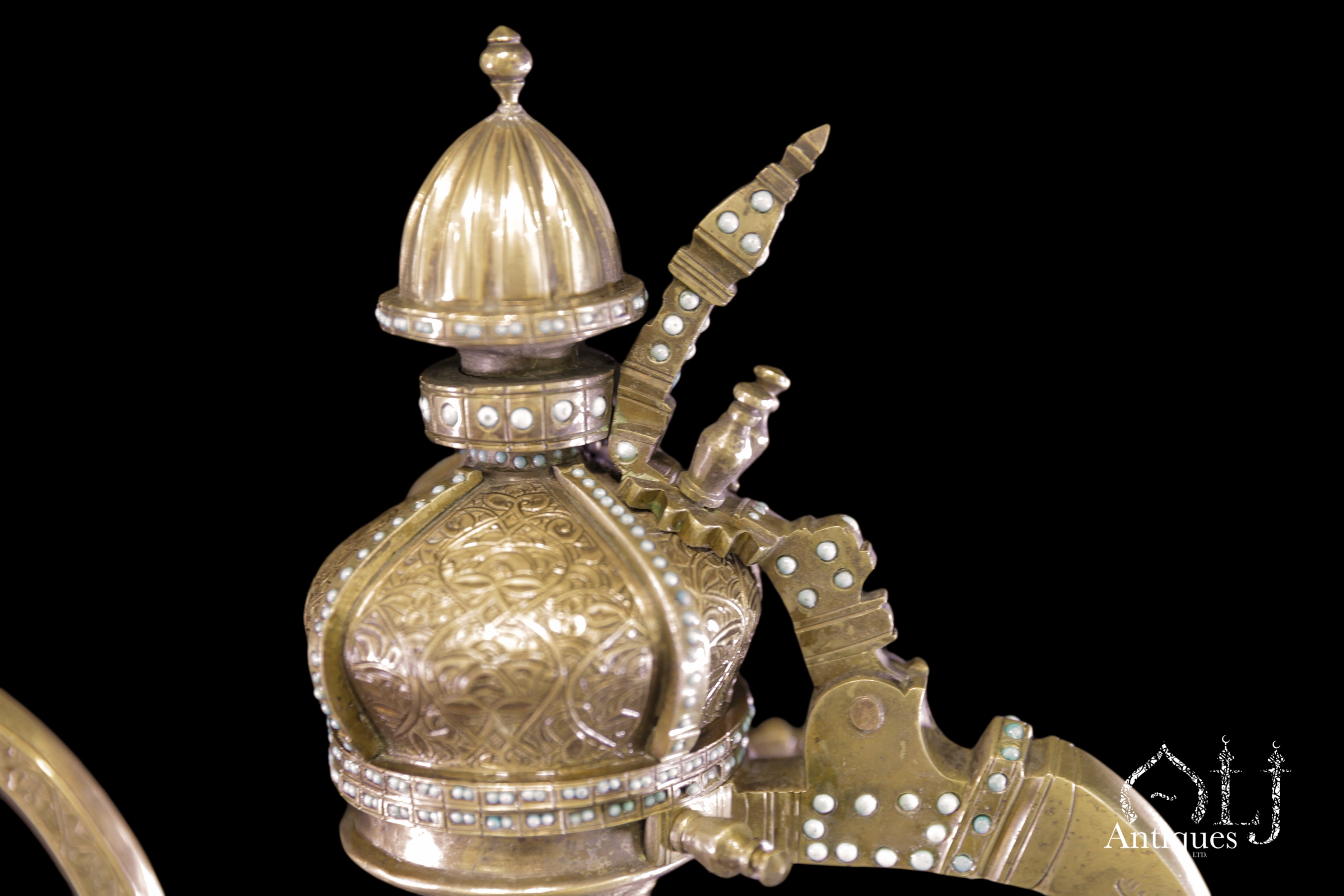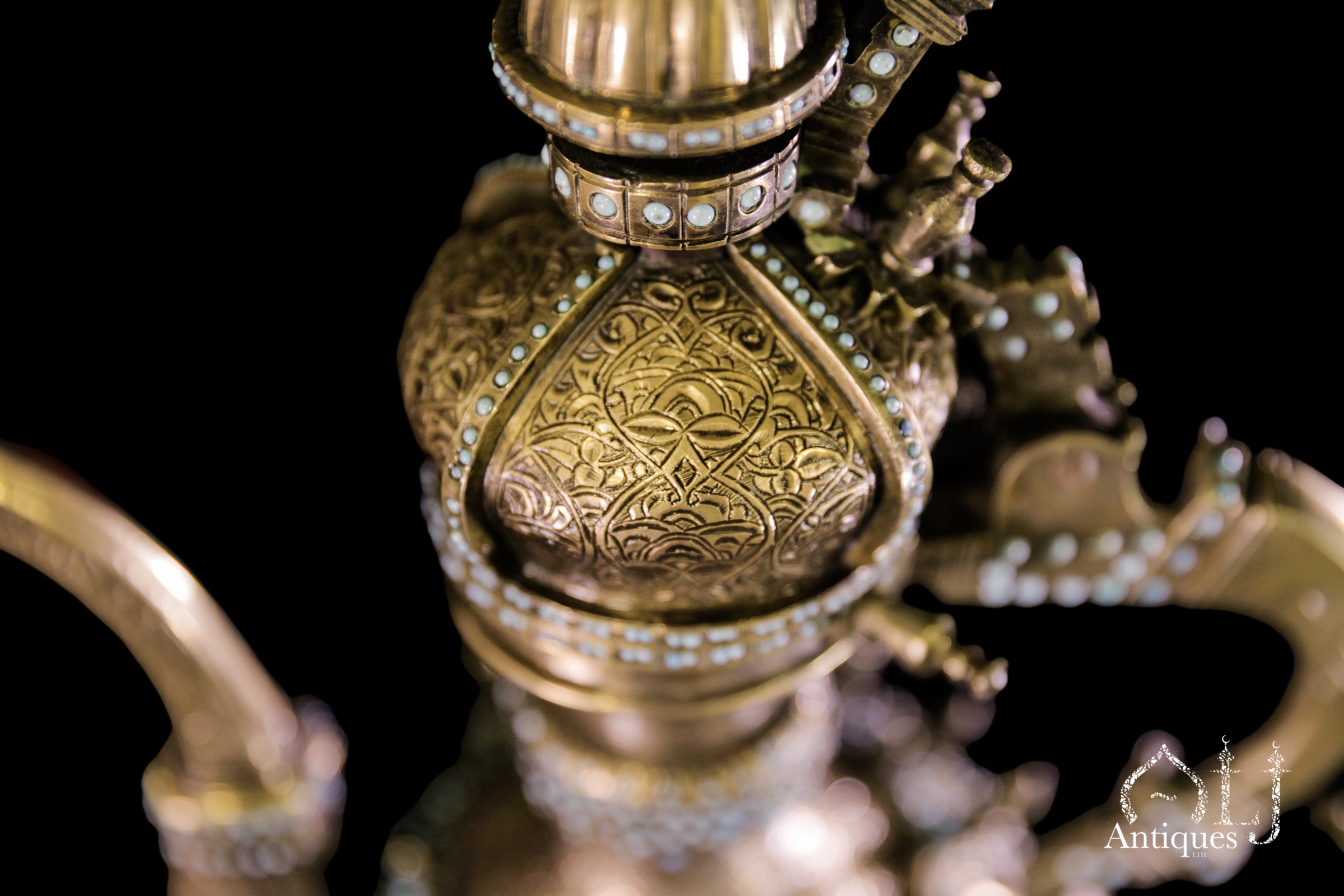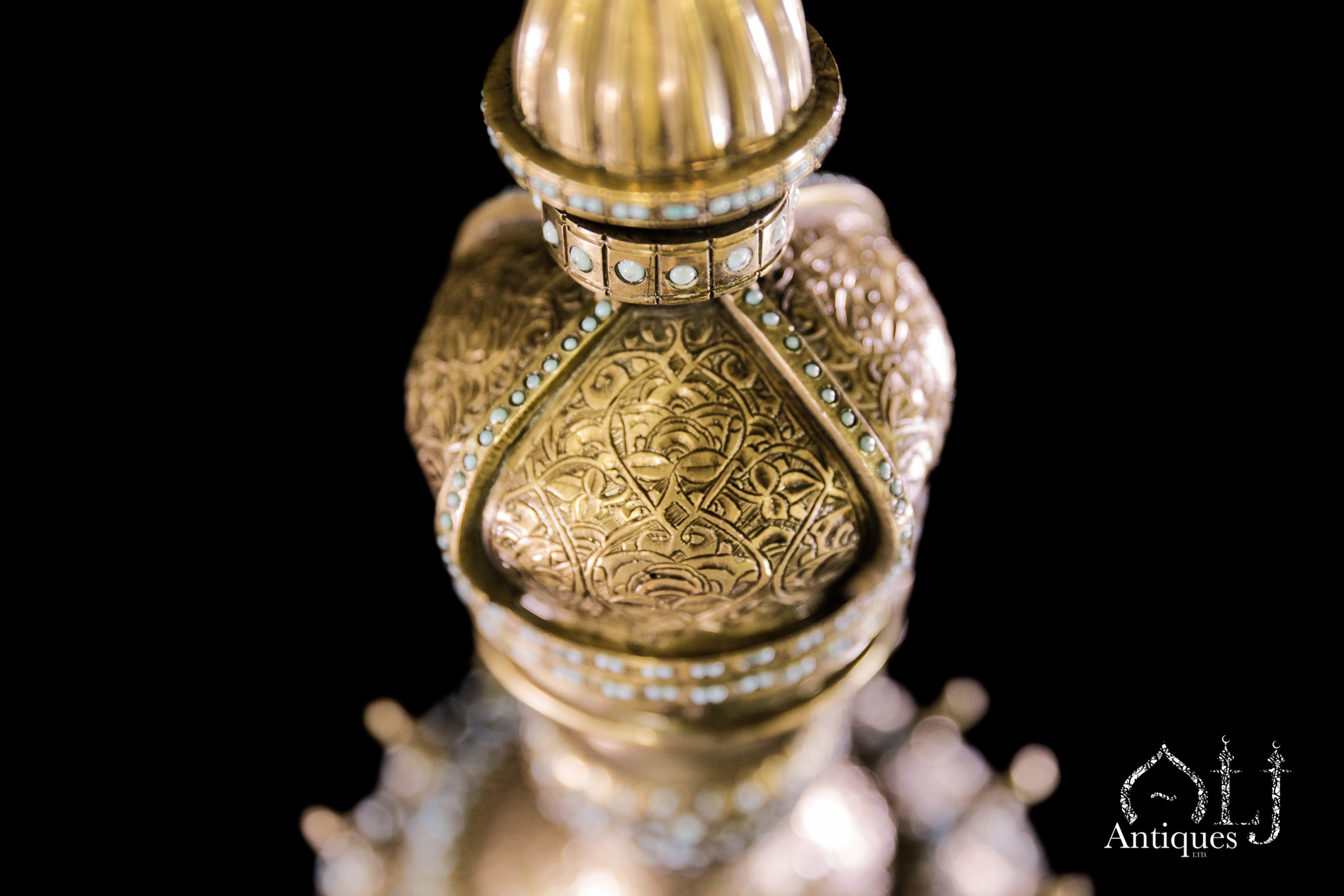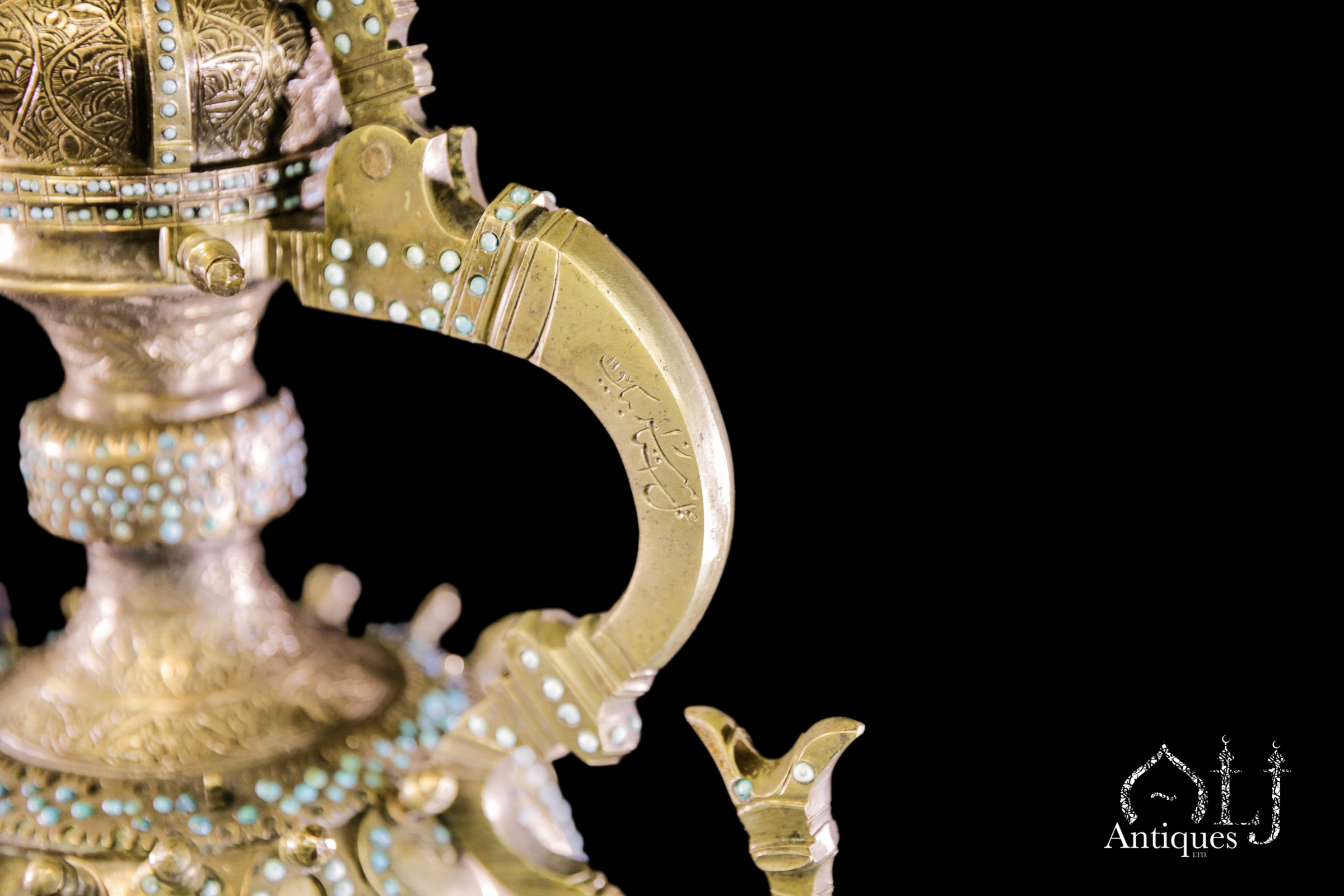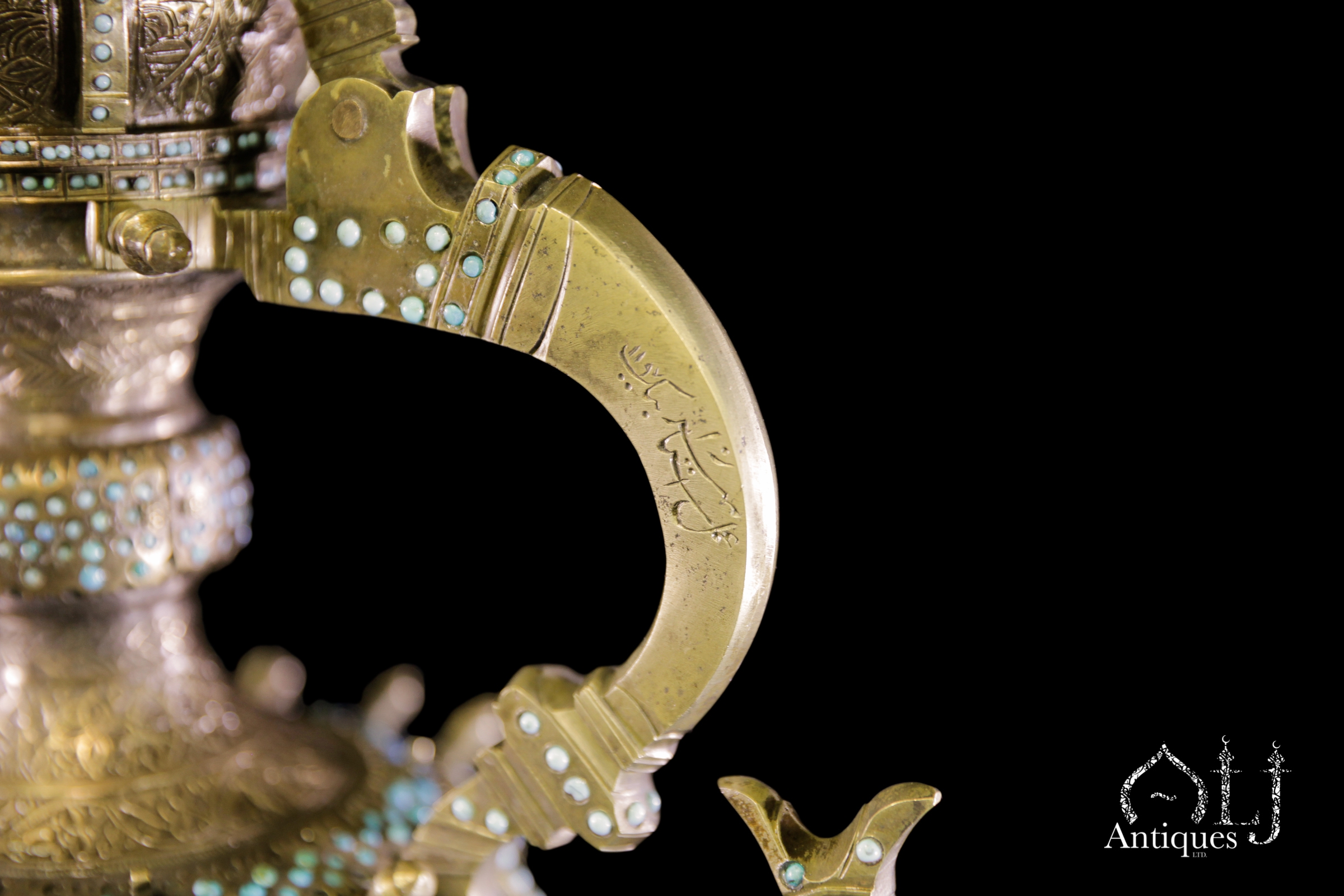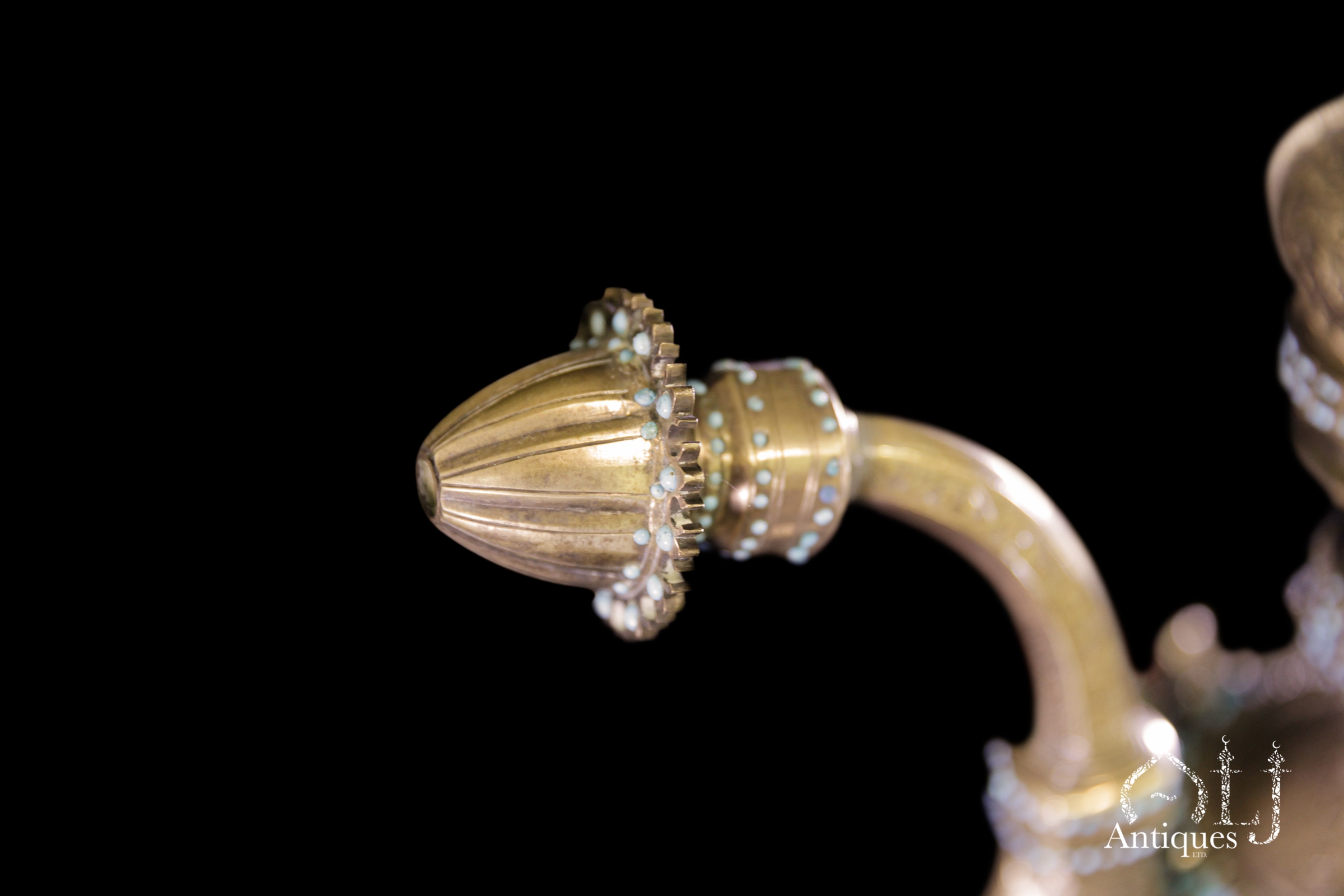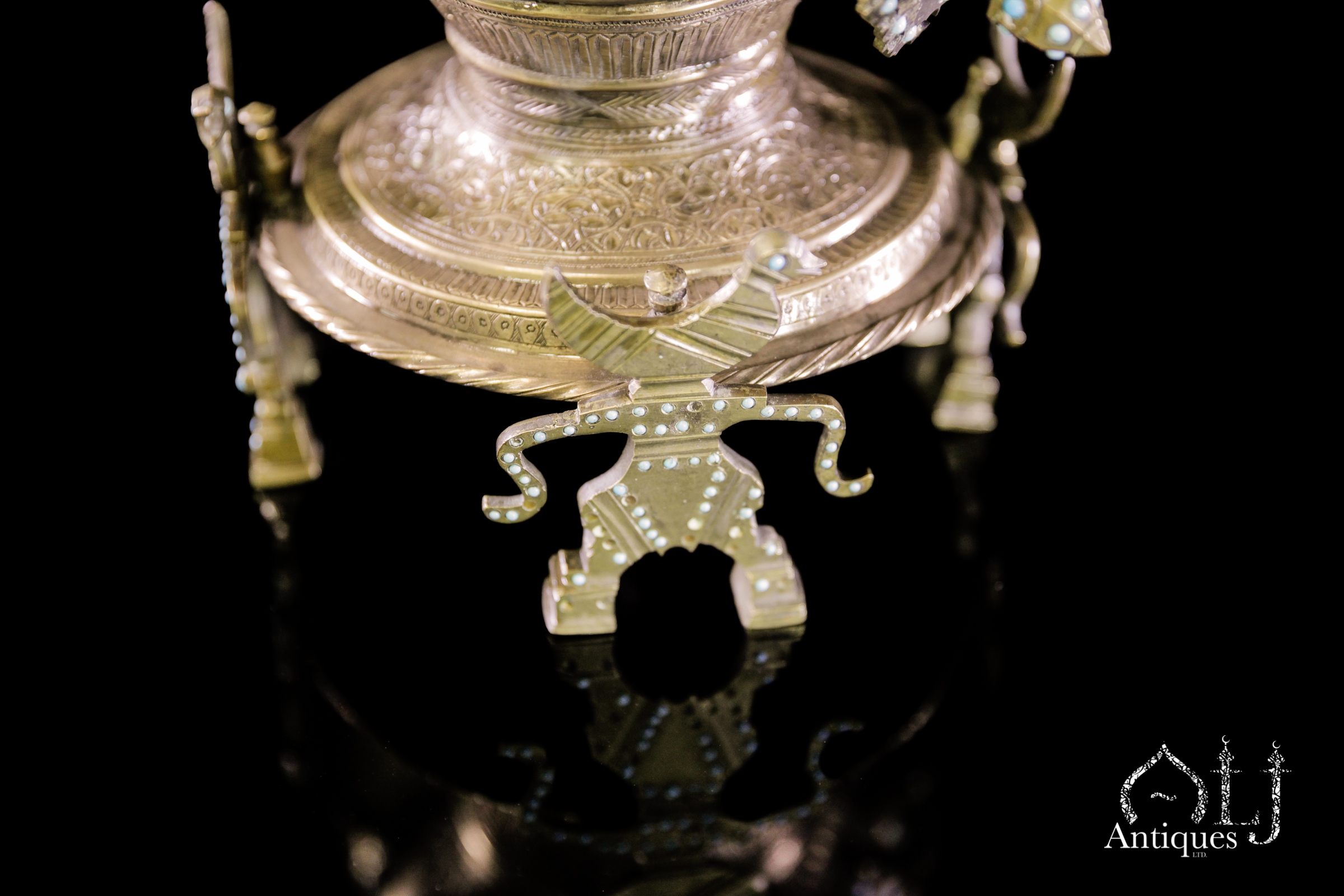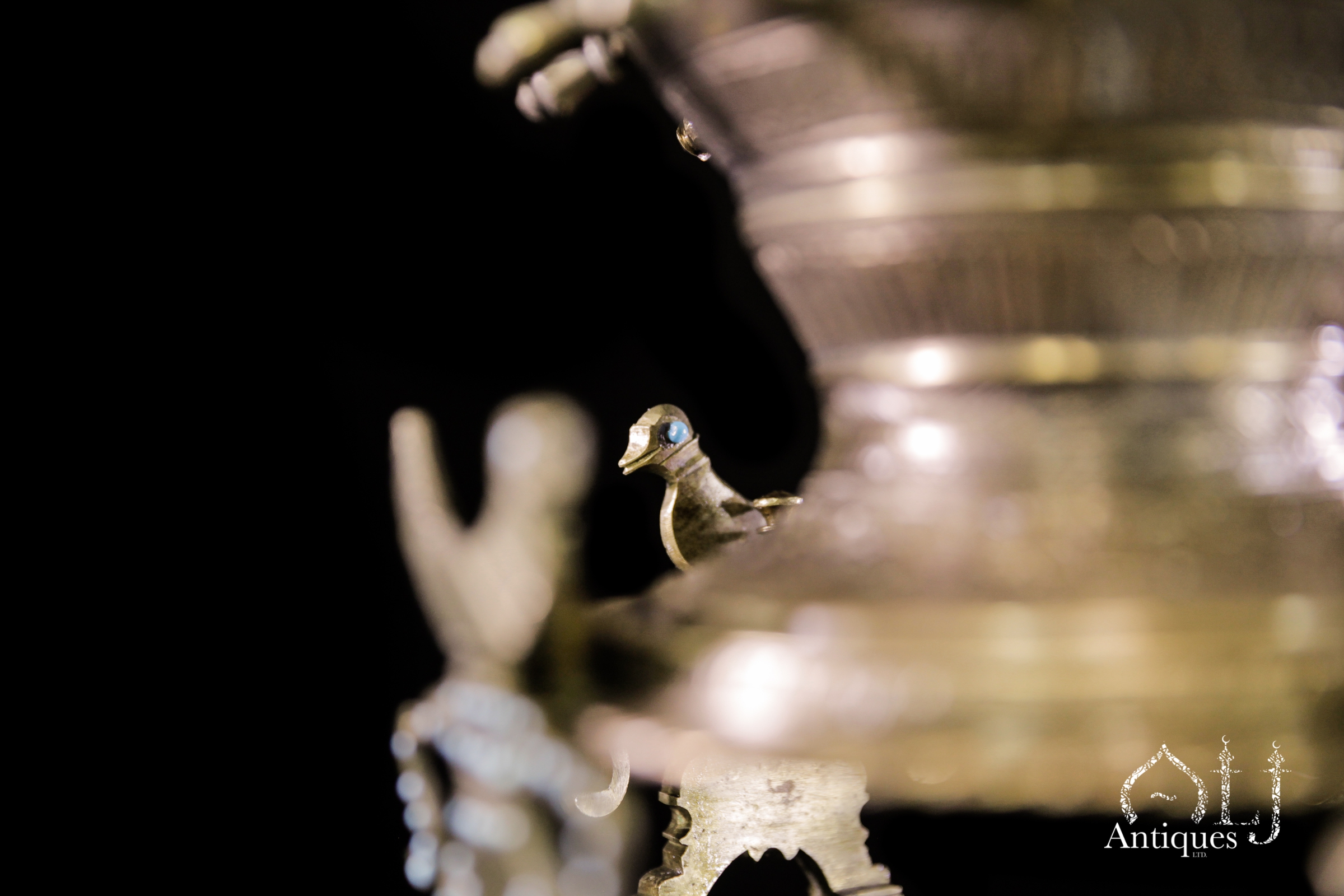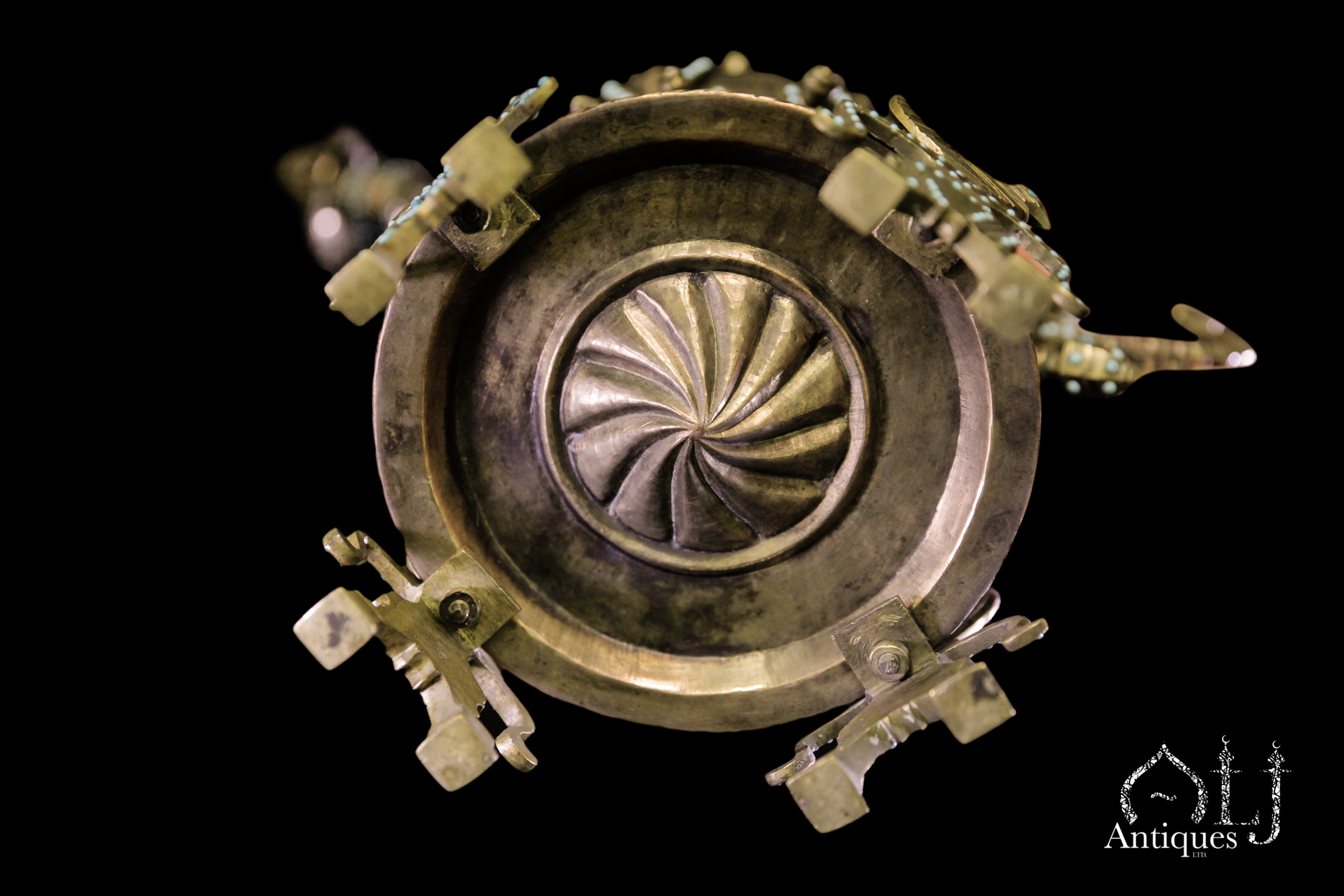Central Asian Ewer, A Monumental Engraved Brass Aquamanile Ewer (Oftaba) Encrusted With Turquoise Stones The Base Is Held By Mythical Creatures With Duck Heads, Made By The Master Mirza Baig (أستاذ ميرزا بيك) Dated 1197 AH 1782 AD Tashkent, Uzbekistan.
Identification Number: 432
Available
Description
The Ewer is of a typical central asian shape, beautifully engraved with various arabesque designs and heavily encrusted with fine polished turquoise stones.
The Artist who had made this beautiful ewer had wished for his masterpiece to be different and very noticeable, not only in terms of the exquisite details, decorations and the stones he had used and added to the ewer but also with the rather unusual design of the ewer’s body which potentially had been influenced by an earlier and more ancient local examples of important ewers which were made specially for the elite of the society, for he had potentially used an ancient idea in the construction of his ewer but with some added ideas and the most unusual feature of this Ewer is the base which is been held by four mythical creatures their body is a human like figure but with bird shaped heads.
Dimensions
The height is 47 cm.
The width across the ewer including the spout and handle is 35 cm.
Condition
Excellent.
Provence
The UK Art Market.
References
Central Asian Art, GE a member of Chrysalis Book Plc., 2003, ISBN: 0 86288 579 5. Please see the very similar two ewers belong to the Museum of the History of the peoples of Uzbekistan, illustrated on page 126.
Exploring Centre Asia, Volume Two, The Carlsberg Foundation’s Nomad Research Project, Esther Fihl, Rhodos, The Please see the similar work on lots 327 & 331 catalogued on pages 529 & 531.
A Song In Metal, Folk Art Of Uzbekistan, Tashkent Gafur Gulyam Art and Publishers, 1986, B. Krenko, Please see similar work in lot No. 73 & 66 illustrated in pages 100-101 & 94-95.
Uzbekistan Heirs Of The Silk Road, Edited By Johannes Kalter And Margareta Pavaloi, Thames Hudson, Printed in Germany. Please see similar craftsmanship of lot Nos. 668 & 643 catalogued on pages 328 & 317.

